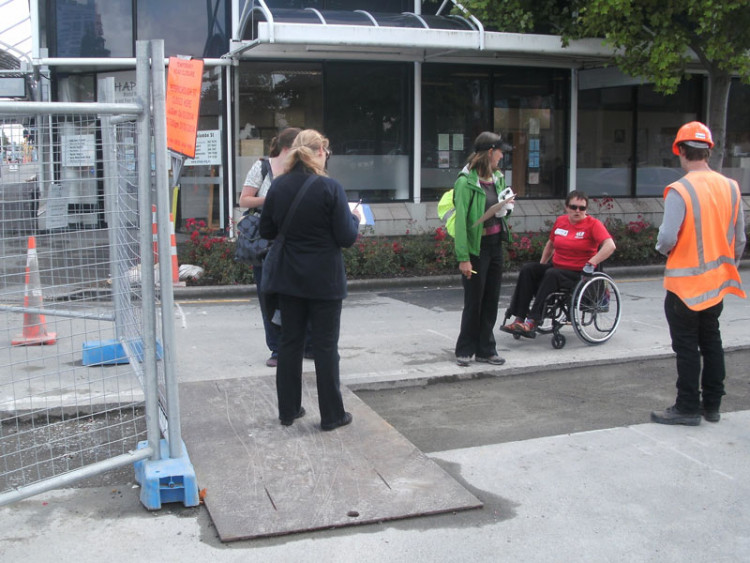Measuring the walkability of an area or route means understanding the ease by which pedestrians can move around. There are many different methods to measuring walkability using desktop analysis, on-site assessment or through pedestrians’ experiences.
A desktop assessment of walkability is appropriate for assessing the connectivity and design adequacy of new facilities that are being built. A major drawback of desktop analysis is that it fails to consider the actual circumstances pedestrians encounter. It disregards issues such as debris, ponding, the sense of personal security, temporary obstructions, inconsistent signage and irregular surfaces, although all may affect pedestrians.
On-site assessments of walkability can involve practitioners asking pedestrians for their perceptions, or the use of assessment criteria to measure or score various aspects. Assessments involving pedestrians consist of checklists and rating systems against which pedestrians rate their own experience as they travel along the route. This means assessments are subjective and results can vary according to individuals’ abilities and confidence, and the prevailing conditions. To minimise bias, the same route can be assessed using different pedestrians at different times, including during hours of darkness.
Additionally, customer tests with people who do not normally use a space can inform how to better cater for those who are excluded. Asking pedestrians to take pictures to document their feedback can also help understand their perception. The complexity of the checklist used may vary but should be tailored to match the characteristics of the pedestrians undertaking the assessment.

A layperson street review of pedestrian provision through a road construction site, Christchurch (Glen Koorey)
Various methods can be used to assess walkability and pedestrian level of service of an existing environment or proposed projects or schemes. A summary of the following methods is provided in the following table document. Information such as when to use each method, its strengths and weaknesses and links to further guidance on each method is provided in the table.
![]()
Table: Area wide and pre-design walkability methods [PDF, 244 KB]
Methods include:
Further information on methods to audit or review projects from concept to post construction is provided under Reviews and audits.
Note that detailed guidance on carrying out a Connectivity Assessment or Street Accessibility Audit is provided below as information on these methods is not available elsewhere.
Methods to assess connectivity of a walking network are outlined in the table below.
Table: Ways to assess connectivity [PDF, 128 KB]
Techniques include:
A Street Accessibility Audit is a tool for councils and road controlling authorities to have a local street network assessed for deficiencies from the perspective of older and disabled pedestrians. Once the scope of the audit is defined, it involves three steps.
The report recommendations can be incorporated into routine maintenance planning, and/or can be addressed with one-off budgets or as part of other transport investment.
Examples of Street Accessibility Audits: